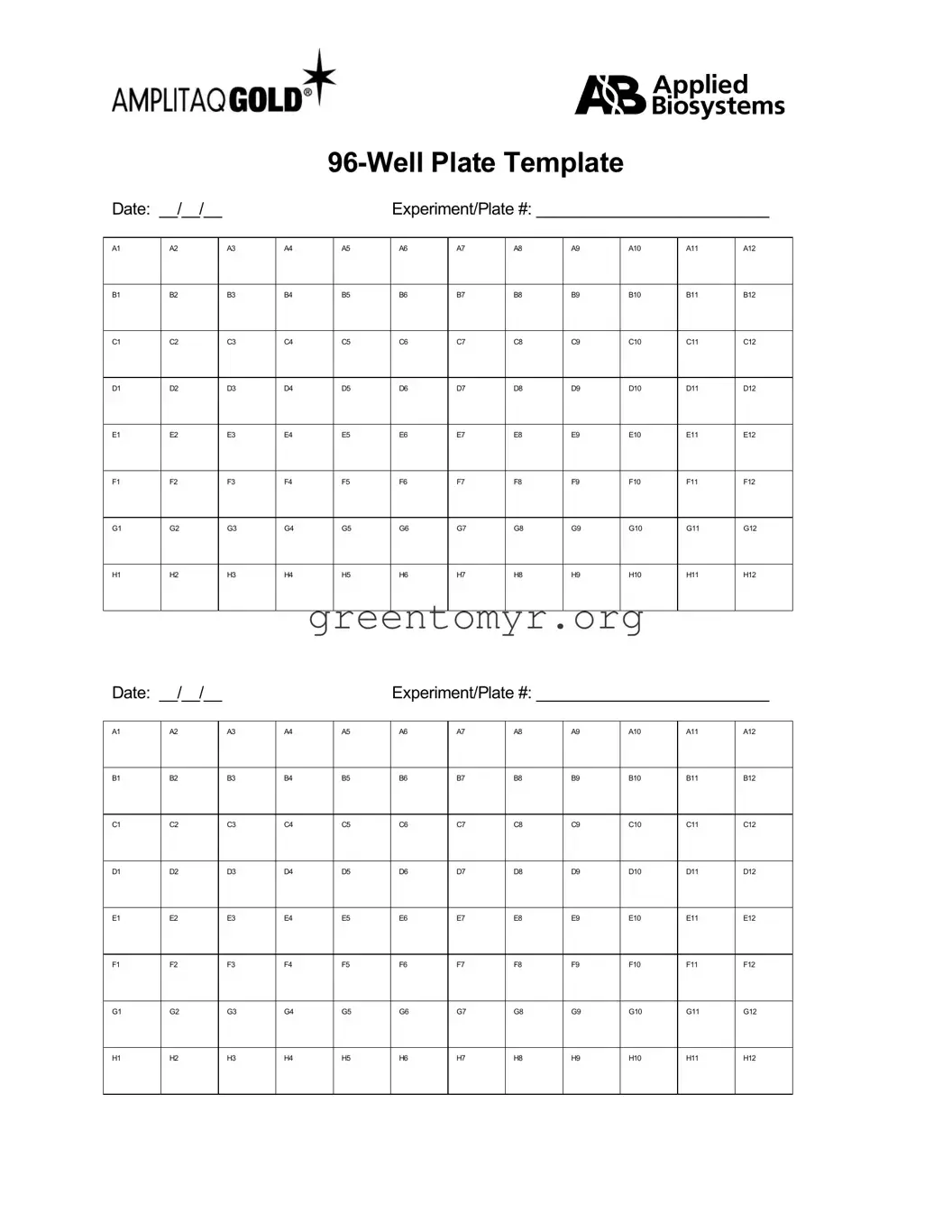The 96 Well form is a common document used in various laboratory settings, specifically for experiments and testing that require sample storage or processing. It organizes samples in a grid format, with 96 individual wells, making it easier to track and manage multiple samples simultaneously.
Filling out the 96 Well form typically involves entering key information for each sample in the corresponding well. This information may include:
-
Sample ID or label
-
Sample type
-
Date of collection
-
Tester or technician name
-
Any specific notes or observations
Ensure that your entries are clear and legible to prevent any confusion later on.
Using the 96 Well form is crucial for maintaining organization in a laboratory. It allows researchers to:
-
Track multiple samples in an orderly manner
-
Avoid mix-ups by keeping detailed records
-
Ensure that test results are accurately matched with the correct samples
Effective documentation can enhance the reliability of experiments and streamline workflow.
Yes, the 96 Well form is versatile and can be used for various sample types, including biological samples, chemical reagents, and others. Just be sure to tailor the information you record based on the specific requirements of the samples you are working with.
After filling out the 96 Well form, store it in a secure and accessible location. If it’s a physical document, keep it in a labeled binder or folder. If it’s digital, save it in a designated folder on your computer or cloud storage, ensuring that it is backed up regularly.
If you make a mistake, it’s best to correct it neatly. Draw a single line through the incorrect information and write the correct data beside it. Initial your correction, so others know that it was verified. Never use correction fluid, as it can lead to confusion.
While there might be variations depending on the laboratory or organization, most 96 Well forms follow a basic grid layout. Some may include pre-defined fields for specific data, so check any guidelines provided by your lab or institution for proper formatting.
Regularly review and update the 96 Well form throughout the duration of your project. Frequent checks can help you catch errors early, keep track of sample status, and ensure that your data remains consistent and accurate. It’s a good practice to conduct a thorough review whenever new samples are added or tested.

